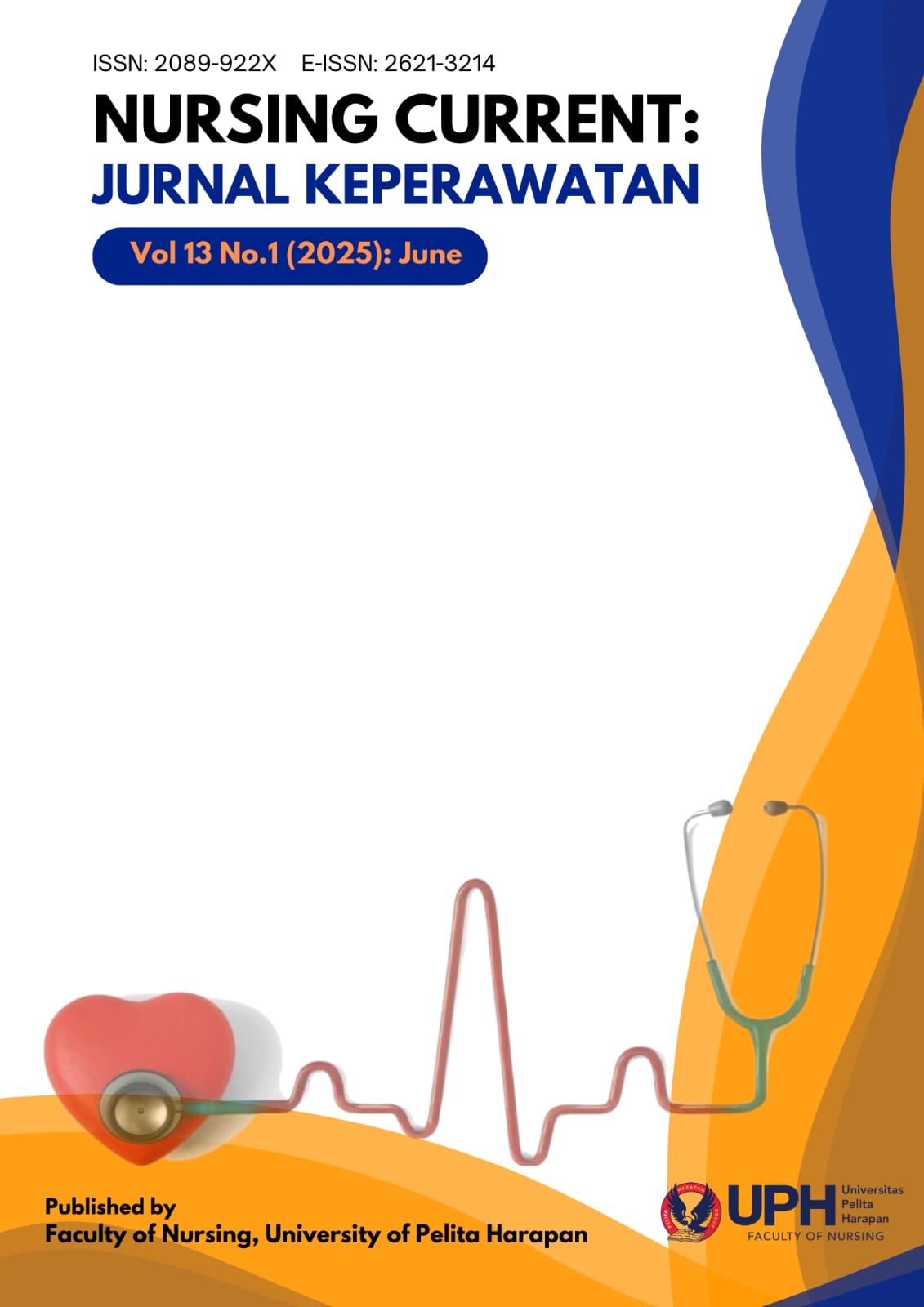Electrical Muscle Stimulation in Swim Training: A Performance and Safety Evaluation In Novice Swimmers
DOI:
https://doi.org/10.19166/nc.v13i1.9711Kata Kunci:
Electrical Muscle Stimulation, Muscle Strength, Novice Athletes, Speed, Swimming PerformanceAbstrak
Electrical Muscle Stimulation (EMS) dapat memicu aktivasi serabut otot melalui arus listrik yang disalurkan melalui elektroda ke otot target. Penggunaan EMS juga telah banyak dilakukan pada atlit kompetitif dari berbagai cabang olahraga. Meskipun EMS telah diterapkan di berbagai cabang olahraga, hanya sedikit penelitian yang meneliti dampaknya secara khusus pada atlet renang, sehingga penelitian ini penting untuk mengisi kekosongan tersebut. Penelitian ini bertujuan untuk mengevaluasi efektivitas EMS Butterfly dalam meningkatkan kecepatan dan performa atlet renang pemula dan membandingkannya dengan metode latihan konvensional. Penelitian ini menggunakan desain eksperimen satu kelompok pre-test post-test yang melibatkan 21 atlet renang pemula (kelompok perlakuan = 14, kelompok kontrol = 7), yang menerima perlakuan EMS selama 15 menit sebelum latihan rutin dua kali seminggu selama satu bulan. Kecepatan renang diukur dengan menggunakan stopwatch. Hasil penelitian menunjukkan bahwa kelompok perlakuan mengalami penurunan waktu tempuh yang signifikan dengan rata-rata 14 detik (p<0,05) dibandingkan dengan kelompok kontrol yang hanya mengalami penurunan sekitar 3,71 detik (p>0,05). Uji statistik menunjukkan adanya peningkatan yang signifikan pada kecepatan dan konsistensi kinerja kelompok perlakuan. Penelitian ini membuktikan bahwa EMS Butterfly efektif dalam meningkatkan performa renang para atlet pemula, terutama dalam hal kecepatan dan pemulihan. Temuan ini merekomendasikan untuk mengintegrasikan EMS ke dalam program pelatihan profesional dan melakukan penelitian lebih lanjut untuk mengeksplorasi efek jangka panjangnya pada atlet di berbagai tingkat kinerja.
Referensi
Choi, D., & Shin, W.-S. (2021). Effect of Electrical Muscle Stimulation Belt for Abdominal Muscles Activation. Physical Therapy Rehabilitation Science, 10(4), 444–449. https://doi.org/10.14474/ptrs.2021.10.4.444
Evenetus, Y., Mulyana, R. B., & Ma’mun, A. (2019). Pengaruh Program Latihan terhadap Peningkatan Kekuatan, Power, Daya Tahan Lengan dan Performa Renang 50 Meter Gaya Bebas. Jurnal Penelitian Pendidikan, 19(3), 445–455. https://doi.org/10.17509/jpp.v19i3.22337
Kaçoğlu, C., & Kale, M. (2015). Elektromyostimülasyon ile İlgili Elektriksel Akım Parametreleri ve Metodolojisi. CBU Journal of Physical Education and Sport Sciences, 10(2), 34–47. https://dergipark.org.tr/tr/pub/cbubesbd/issue/32242/357841
Maffiuletti, N. A., Gometti, Amiridis, Martin, Pousson, & Chatard. (2000). The Effects of Electromyostimulation Training and Basketball Practice on Muscle Strength and Jumping Ability. International Journal of Sports Medicine, 21(6), 437–443. https://doi.org/10.1055/s-2000-3837
Matitaputty, J. (2024). The Relatioship between Leg Muscle Strength Arm Muscles and Self-Confidence with 50 Metres Swimming Speed Free Style. KnE Social Sciences. https://doi.org/10.18502/kss.v9i31.17595
Micke, F., Kleinöder, H., Dörmann, U., Wirtz, N., & Donath, L. (2018). Effects of an Eight-Week Superimposed Submaximal Dynamic Whole-Body Electromyostimulation Training on Strength and Power Parameters of the Leg Muscles: A Randomized Controlled Intervention Study. Frontiers in Physiology, 9(1719), 1–9. https://doi.org/10.3389/fphys.2018.01719
Montenegro, J. D. O., & Gutierres, L. L. B. (2024). Atuação Da Enfermagem Em Saúde Esportiva: Cuidados Essenciais Para Atletas Paralímpicos Com Lesão Medular E Paralisia Cerebral. Revft, 28(139), 40–41. https://doi.org/10.69849/revistaft/ch10202410312140
Nishikawa, Y., Watanabe, K., Takahashi, T., Maeda, N., MAruyama, H., & Kimura, H. (2021). The effect of electrical muscle stimulation on quadriceps muscle strength and activation patterns in healthy young adults. Journal of Sport Science, 21(10), 1414–1422. https://doi.org/10.1080/17461391.2020.1838617
Plumb, D. M. (2024). Use of Post-Exercise Recovery Strategies in Team and Individual Sports. Journal of Clinical Exercise Physiology, 13(s2), 445–445. https://doi.org/10.31189/2165-7629-13-s2.445
Setiawan, Y., Sodikoen, I., & Syahara, S. (2018). Kontribusi Kekuatan Otot Tungkai terhadap Kemampuan Dollyo Chagi Atlet Putera Tae Kwon Do di BTTC Kabupaten Rokan Hulu. Jurnal Performa Olahraga, 3(1), 15–20. https://doi.org/10.24036/kepel.v3i01.39
Syam, N., & Bismar, A. R. (2020). Hubungan Daya Ledak Tungkai dan Kekuatan Otot Lengan terhadap Kemampuan Renang Gaya Dada Pada Atlet Renang PR. Garuda Laut Makassar. COMPETITOR: Jurnal Pendidikan Kepelatihan Olahraga, 10(2), 55. https://doi.org/10.26858/com.v10i2.13185
Wahyudi, I., Raharjo, S., & Abdullah, A. (2018). Pengaruh Electro Muscle Stimulation Pada Otot Tungkai Terhadap Peningkatan Kecepatan dan Kelincahan Siswa Akademi Arema U-17 Kota Malang. Jurnal Sport Science, 8(2). https://doi.org/10.17977/UM057V8I2P131-137
Widyatama, A. (2011). Pengaruh Neuromusculer Electrical Stimulation NMES)Terhadap Peningkatan Kekuatan Otot Quadricep Femoris Dan Kemampuan Jumping Pada Atlit Bola Voli [Thesis (Skripsi)]. Universitas Muhammadiyah Surakarta.
Wirtz, N., Zinner, C., Doermann, U., Kleinoeder, H., & Mester, J. (2016). Effects of Loaded Squat Exercise with and without Application of Superimposed EMS on Physical Performance. Jousnal of Sport Science & Medicine, 15(1), 26–33. https://pmc.ncbi.nlm.nih.gov/articles/PMC4763843/
Unduhan
Diterbitkan
Cara Mengutip
Terbitan
Bagian
Lisensi
Hak Cipta (c) 2025 Al Ghumayda, Afianti Sulastri, Upik Rahmi, Boyke Maulana

Artikel ini berlisensiCreative Commons Attribution-ShareAlike 4.0 International License.
Authors who publish with this journal agree to the following terms:
1) Authors retain copyright and grant the journal right of first publication with the work simultaneously licensed under a Creative Commons Attribution License (CC-BY-SA 4.0) that allows others to share the work with an acknowledgement of the work's authorship and initial publication in this journal.
2) Authors are able to enter into separate, additional contractual arrangements for the non-exclusive distribution of the journal's published version of the work (e.g., post it to an institutional repository or publish it in a book), with an acknowledgement of its initial publication in this journal.
3) Authors are permitted and encouraged to post their work online (e.g., in institutional repositories or on their website). The final published PDF should be used and bibliographic details that credit the publication in this journal should be included.

This work is licensed under a Creative Commons Attribution-ShareAlike 4.0 International License.






